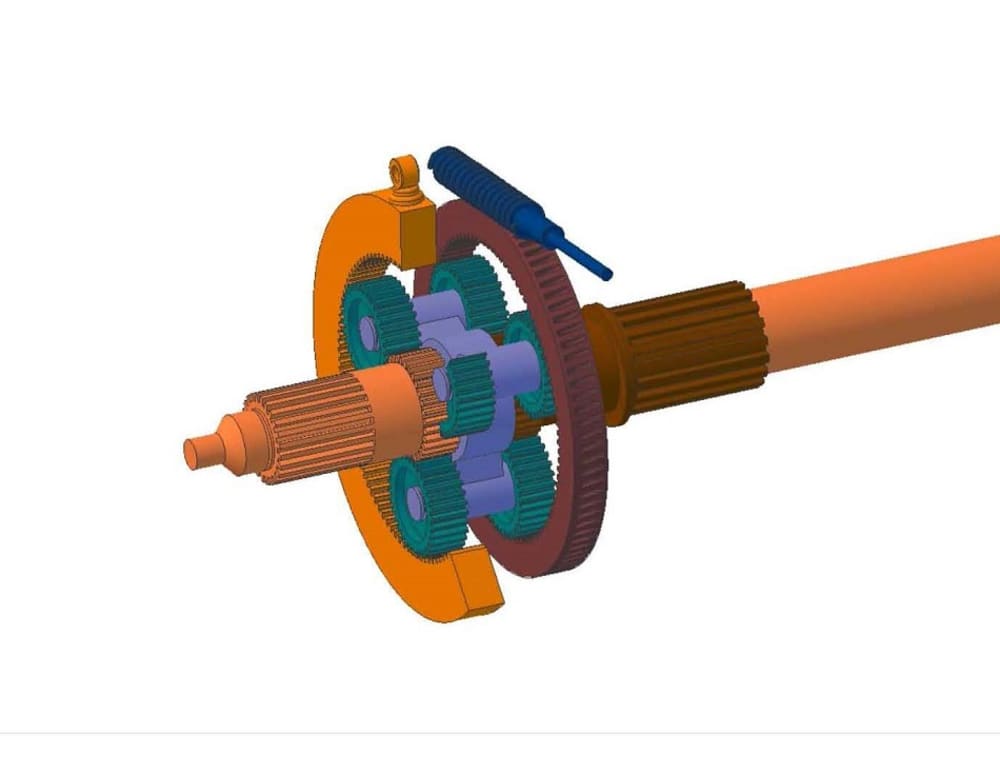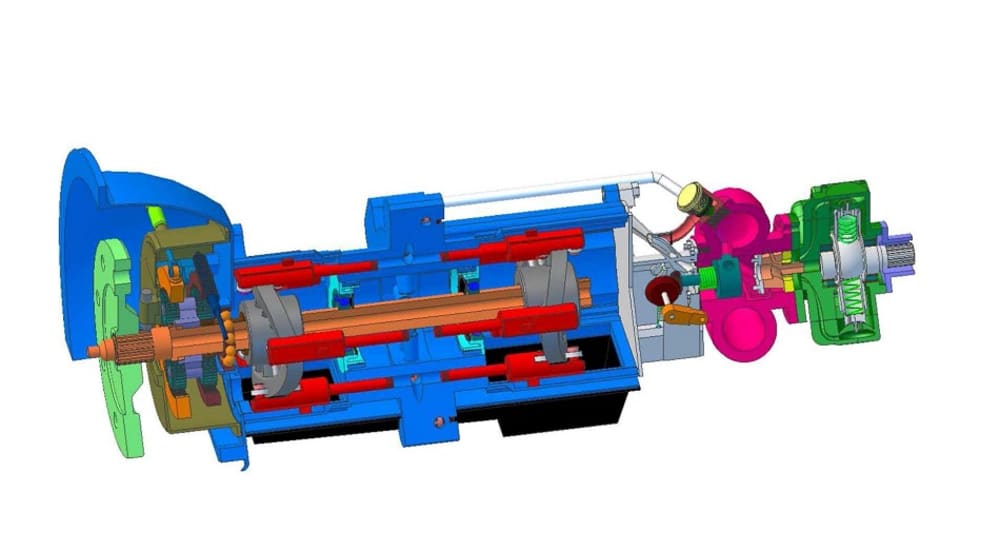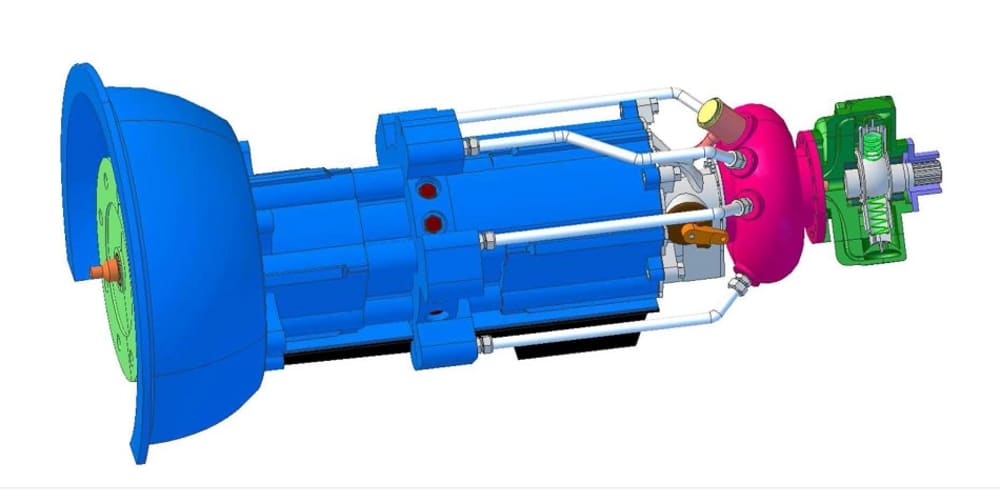Most vehicles currently have a practical Fuel Efficiency of about 15%. In other words, of the total heat energy contained in fuel, only about 15% of it is put to use in moving the vehicle. However, the engines powering these vehicles have about 34% Fuel Efficiency when held at their most efficient Revolutions-Per-Minute (RPM). All Constant Speed or Continuously Variable Transmissions (CST or CVT) are attempts to hold the engine at its most efficient RPM. Currently available CST/CVT technologies have limited power (and torque) capability, because they primarily depend on friction pulleys for the transfer of power.
Here is presented a CST/CVT incorporating a Variable Displacement Hydraulic Pump close coupled to a Hydraulic Motor. The Displacement of the Hydraulic Pump is directly, mechanically controlled by an Angular Motion Translator (AMT).
The patented AMT is a mechanical system that allows the angular relationship (or phase) of two rotating parts to be directly controlled by two non-rotating parts. As shown in Figure 1, the AMT works as follows: the annulus gears on both planetary systems are held motionless except when an angular differential is initiated. The AMT input shaft is connected to the input sun gear and is also the innermost output shaft. The input sun gear drives the input planetary gears against the input annular gear. Input planetary gears rotate the planet intercarrier, which, in turn, forces the output planet gears to rotate within the output annulus ring. The output planetary gears drive the output sun gear by working off of the static output annulus gear. The output sun gear is connected to the output tube rotating on the outside of the input shaft. The output tube and input shaft will rotate at the same speed, and the output tube will have added to its motion any change in the angular relationship between the two annulus gears.
To produce the CST/CVT, the outputs of the AMT are used to drive a hydraulic pump consisting of opposed, axial pistons. As shown in Figure 2, a cutaway view of the transmission, the opposing pistons are driven by Wobble Plates that produce a sinusoidal motion of the pistons along their axis. The Wobble Plates are connected to their respective output of the AMT, so that as the AMT varies the phase relationship of the Wobble Plates, the dynamic phase relationship of the opposed pistons is also varied. When the pistons are exactly in phase, the maximum volume of hydraulic fluid exits the pump; when the pistons are 180 degrees out of phase, no hydraulic fluid will be discharged to the motor.
Coupled with a high-power Hydraulic Motor as shown in Figures 2 & 3, the assembly represents a Constant Speed, Continuously Variable Transmission that is roughly the same size as existing transmissions, and would be capable delivering over 750 horsepower from 2,000 foot-pounds of torque.
In summary, the AMT based Constant Speed/Continuously Variable Transmission provides a bolt-on replacement for existing transmissions that could double the mileage of the vehicle.
Like this entry?
-
About the Entrant
- Name:Paul Baker
- Type of entry:teamTeam members:G. Paul Baker, Jr. & Anders S. Gerhart
- Software used for this entry:Geomagic (Alibre) Design Pro
- Patent status:patented








